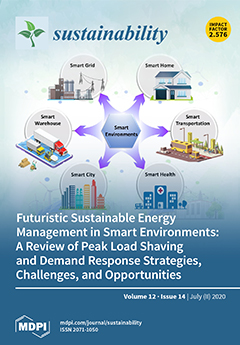Honey bees are essential to sustaining ecosystems, contributing to the stability of biodiversity through pollination. Today, it is known that the failure of pollination leads irremediably to the loss of plant cultures and, as a consequence, inducing food security issues. Bees can be
[...] Read more.
Honey bees are essential to sustaining ecosystems, contributing to the stability of biodiversity through pollination. Today, it is known that the failure of pollination leads irremediably to the loss of plant cultures and, as a consequence, inducing food security issues. Bees can be affected by various factors, one of these being
Nosema spp. which are protozoans specifically affecting adult honey bees and a threat to bee populations around the world. The composition of the phytotherapeutic product (
Protofil®) for treating nosemosis was analyzed from a biochemical point of view. The most concentrated soluble parts in the phytotherapeutic association were the flavonoids, most frequently rutin, but quercetin was also detected. Additionally, the main volatile compounds identified were eucalyptol (1.8-cineol) and chavicol-methyl-ether. To evaluate the samples’ similarity–dissimilarity, the PCA multivariate statistical analysis, of the gas-chromatographic data (centered relative percentages of the volatile compounds), was applied. Statistical analysis revealed a significant similarity of
Protofil® with the
Achillea millefolium (Yarrow) samples and more limited with
Thymus vulgaris (Thyme) and
Ocimum basilicum (Basil)
, and, respectively, a meaningful dissimilarity with
Taraxacum officinale (Dandelion). The results have shown a high and beneficial active compounds concentration in the analyzed herbs. High similarity with investigated product recommending the
Protofil®, as the treatment compatible with producing organic honey.
Full article





